If barley on the eye does not pass for a long time, it gives a person a lot of anxiety. As a rule, barley on the eye disappears within a few days, but sometimes the recovery can take several months. Let's understand the reasons why barley on the eye does not pass for a long time.
Barley on the eye does not pass: what is the reason?
Stye on the eye is very common. The cause of barley is inflammation of the sebaceous gland of the eyelid with subsequent suppuration, or the ciliary hair follicle. Barley on the eye develops as follows:
- On the first day, the eyelid swells and turns red, the pain is moderate, the affected eyelid may itch a lot
- A day later, you can see the appearance in the center of inflammation of a white, purulent head of barley. In this case, the pain in the eye increases, the inflamed eyelid becomes hot.
- After one more, less often after two days, the purulent head will burst, the pus will come out and relief will come.
However, sometimes barley on the eye does not go away for a long time or constantly recurs.
Let's look at the main reasons why barley does not pass on the eye for a long time:
- If barley on the eye does not pass for a long time, it is probably a very strong inflammatory process, in which the traditional remedies used to treat barley on the eye are ineffective. Usually painful sensations persist for a long time. When barley on the eye does not pass for a long time, you should consult a doctor, since an active inflammatory process can give serious complications.
- Barley on the eye does not pass for a long time as well due to low immunity, for example, after an illness. In this case, barley may not pass for several weeks, giving a person a lot of anxiety. Also, with reduced immunity, there may be frequent relapses of barley on the eye. It is necessary to treat such barley in a comprehensive manner, taking also measures to restore the body and increase immunity.
- Sometimes barley on the eye does not pass for a long time, but at the same time there are no painful sensations, the discomfort is delivered exclusively by the growth that forms on the eyelid. This growth can reach 10-15 millimeters and significantly press on the eyeball. In this case, we are talking about a disease very similar in its symptoms to barley on the eye - chalazion. Chalazion is a chronic process caused by a violation of the outflow of secretions or clogging of the eyelid gland. Chalazion often develops as a complication of eye barley, and therefore a person thinks that eye barley does not pass for a long time, although we are talking about a completely new disease. With chalazion, pain symptoms are absent, the growth resembles a nodule or a hail, as this formation is often called. If you suspect that barley on the eye does not pass for a long time, since it has degenerated into a chalazion, conventional drugs do not help, then you should consult a doctor. It is imperative to treat chalazion, and the sooner the treatment is started, the more simple it will be. Otherwise, the chalazion will grow and thicken, negatively affect the eye and vision. At the initial stages in the treatment of chalazion, conservative therapy is applicable: ointments, oral preparations, physiotherapy. But if the contents have already condensed, then most likely an injection treatment will be required, in which a resorbing drug is injected into the chalazion. If the chalazion reaches more than 5 millimeters in size, then surgical intervention will be required. However, such an operation leaves no scars or marks, is carried out within 10 minutes and is safe.
If barley on the eye does not pass for a long time, you should seek the advice and prescription of treatment from a doctor. The most effective therapy will be chosen depending on the history of the disease and the characteristics of its course.
Barley is a common disease that, with adequate treatment, resolves in 2-7 days. Here it is necessary to take into account both the state of the immune system and the characteristics of the organism. But what if the barley does not pass for a long time? What are the reasons for this abnormal condition?
When correct treatment barley passes in 2-7 days.
The cause of barley is an inflammatory process in the sebaceous gland or in the ciliary hair follicle. Further suppuration is possible.
How long does barley usually take to the eye? To deal with this issue, consider the points of development of the disease:
- on the first day, one of the eyelids turns red, swelling appears, pain is practically not felt, but itching is present;
- on the second or third day, a purulent head appears, the pain is more palpable, hyperthermia and increased eyelid redness are characteristic;
- the final stage - the abscess breaks out, and the patient notices significant relief.
Thus, the disease, not complicated by any reason, lasts from 3 to 5 days. But sometimes barley does not go away for a long time or after opening it appears again and recurs.
Causes of lingering barley
Main reasons:
- Traditional methods for fighting barley do not cope with severe infection, which attracted a persistent inflammatory process. In this case, there is no need to postpone the visit to the doctor - this condition can give complications, up to the loss of part of the vision.
- The immune system fights poorly against an intruder - an infection or a virus. Barley on the eye does not pass 2 months or more, or appears immediately after it bursts. In this case, it is necessary to approach the treatment in a complex way together with the intake of vitamins, immunomodulators. Monitor nutrition and a healthy lifestyle.
- Timely therapy not started. Ophthalmologists recommend treatment while the barley is not yet ripe. At the first sign, you need to apply dry heat to the eye - a boiled egg and so on. Then apply ointment, instill drops every three to four hours.
- Acceleration of the process by piercing or extrusion. Sometimes a sick person wants to speed up the recovery time. Decides to get rid of the problem on his own, but does not wait for the abscess to mature. An independent procedure can not only prolong the course of the disease, but also lead to complications in the form of sepsis. Barley should ripen for two to five days, if this does not happen, then you should consult a doctor.
- The constant stay of a person in conditions favorable for the development of the disease: draft, cold, high humidity or very dry air. In this case, you need to think about strengthening the immune system.
Barley is often confused with chalazion. This is a growth that presses on the eye. Unlike inflammatory process on the eyelid, it does not cause discomfort, pain to a person, there is no hyperemia. The reason for the development of chalazion is the clogging of the sebaceous glands or a violation of the outflow of secretions. This disease is often a complication of barley. But it is already another ailment to which their methods of treatment are applied.

In order not to run the disease to a dangerous state, it is important to consult a specialist in time.
Chalazion therapy
It is better to be examined by a doctor for early stages diseases, so therapy will accelerate. Prolonged inactivity leads to the fact that the chalazion grows and thickens, and thereby interferes with normal vision.
At the initial stage, you can apply ointments (erythromycin, chloramphenicol), drops and physiotherapy procedures. In advanced cases, treatment with injections with a resorbing effect is required.
The operation can be done if the chalazion has reached 5 ml or more in size. The procedure will not take more than 10-11 minutes, after it there are no scars, marks, scars.
Psychosomatic causes
Psychosomatics gives its explanation for the protracted inflammatory process in the eyelid. If the barley does not pass for a long time, then this means that the sick person often criticizes the events taking place with great hostility and anger, condemns loved ones and relatives. The state of mind is reflected in the eyes, a person looks at the world from a negative point of view, with resentment and evil that he does not want to let go. All this negativity manifests itself in the form of barley. The abscess ripens, opens up and reappears. This will happen in a circle until the sick person clears himself of his dark thoughts, forgives a loved one or changes his views on others.
Feb 3, 2017 Anastasia Graudina
Barley on the eye is an inflammation of the hair follicle of the eyelash or sebaceous gland located near the hair follicles. The inflammation is acute, purulent. This unpleasant disease usually manifests itself at first with mild redness and swelling in the eyelash area. The site of inflammation is small, but painful. After a couple of days, pus appears in the inflamed area, so the top of the barley becomes yellowish. And after four days, pus begins to come out. Soreness decreases. The important point is that barley cannot be squeezed out. Otherwise, you can bring another infection to the eye. Barley can be localized in the outer corner of the eye. Then a person can find a strong swelling of the eyelid, as the lymph circulation is disturbed. If the barley is not ripe, then it can dissolve on its own. Many researchers believe that this disease is a sign of weak immunity. If a person does not pass barley for a long time, it is worth seeking help from specialists.
Barley: the essence of the disease and the causes of its appearance
The main reason for the formation of barley on the eye is the ingress of a bacterial infection. Infection in the eye - non-compliance with the rules of personal hygiene. Barley appears due to the ingestion of an acute staphylococcal infection (namely, Staphylococcus aureus) into the hair follicle or sebaceous gland. Barley appears most often in young children, as they have a weak immune system. Why does barley appear if the immune system is not weakened? The reasons may also be diseases of the stomach and intestines, helminthic invasion, diabetes mellitus, metabolic disorders, hypothermia, and the ingress of mites. Reduced immunity only contributes to the development of the disease.
In addition to the external classic barley, there is an internal and frozen one. The inner barley is called meibomite. It opens into the conjunctival sac. Outwardly, meibomite is manifested by the appearance of a build-up on the eyelid. The growth is also called a chalazion. It is quite hard and difficult to remove. Chaliazion is also called frozen barley. It is painless. It is removed surgically. Conservative measures in the treatment of meibomite are rarely used.
Barley is not contagious: it is not transmissible. It is possible to become infected with it only in cases where a person does not follow the rules of personal hygiene and does not wash his hands. No matter how sick one tries to quickly cure barley, the main rule here is not to harm.
The most common symptoms of a condition such as barley are:
- soreness in the eye area;
- headache;
- slight rise in body temperature.
How to quickly cure barley
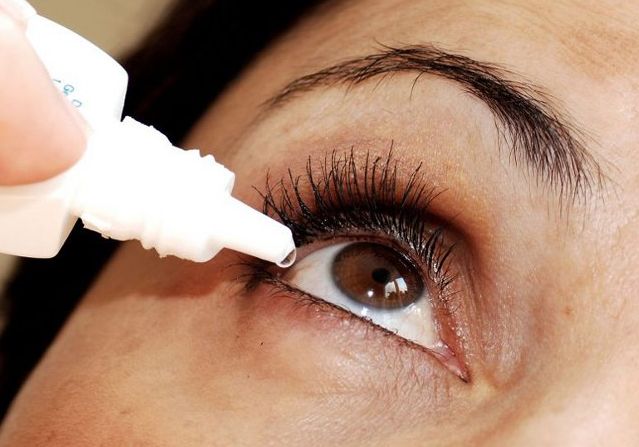
First aid in this situation is simple. At the time of the onset of the disease, it is necessary to make a semi-alcoholic compress. To make it, the patient will need:
- a small piece of cotton wool
- vodka.
A piece of cotton wool is moistened with vodka, wrung out and gently applied to the reddened area. Serious care and attention should be exercised: it is important that the vodka does not get into the eye. On a moistened piece of cotton wool, put a dry, larger size. The compress must be kept for no more than 15 minutes. After 15 minutes, it is recommended to discard the raw cotton wool, and leave the dry cotton for at least another three hours. This method is very effective for the onset of inflammation.
Barley can be quickly cured using another method: exposure to dry heat. For this you need a boiled egg. As soon as it is cooked, it should be wrapped in a cloth and applied to the eye. You need to keep until the egg cools down. This method has features:
- If the barley has already formed a purulent head, then it cannot be heated with dry heat, otherwise the suppuration will intensify.
- If the barley is already ripe, then you should consult an ophthalmologist or wait for the inflammation to open itself. Squeezing is prohibited.
So that barley does not give complications in the form of conjunctivitis, it is necessary to put tetracycline ointment in the eyes (you can use drops of chloramphenicol). With diabetes mellitus, barley can appear one after another or several pieces at once. In this case, it is necessary:
- Check the blood for sugar content.
- Conduct a glucose tolerance test. It is carried out as follows: on an empty stomach, a person determines blood sugar using a glucometer. Then he eats 70 g of sugar (usually sweetened water is used). Further, blood sugar should be measured hourly. Thus, a person must find out when the sugar will drop to normal. The norm is TSH for no more than 120 minutes.
The disease does not go away even in the case of incorrect treatment. The person's condition may even get worse.
Barley does not go away: when to see a doctor
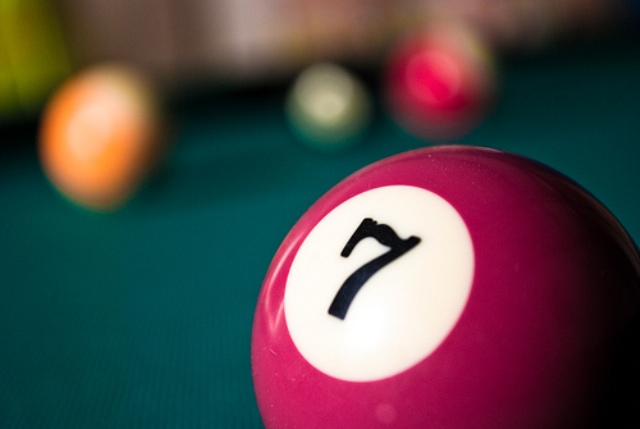
Specialist help is required in the following cases:
- The disease does not go away within 7 days.
- With barley, there is a deterioration in visual functions.
- A dense nodule is observed on the eyelid.
You should definitely visit an ophthalmologist. The doctor will prescribe antibacterial ointments, drops, tablets. At the initial stage of the disease, the specialist recommends dry heat, warming up using UHF. An ophthalmologist can prescribe drugs:
- gentamicin ointment and eye drops;
- tetracycline ointment 1%;
- drops of ciprofloxacin;
- 1% erythromycin ointment;
- 30% albucid;
- other newer drugs.
What if the barley does not pass for a long period? There are several recommendations, but the most important of them is contacting an ophthalmologist. So, the recommendations:
- instillation of albucide into the affected eye at least 6 times a day;
- lubrication of the eyelid with chloramphenicol ointment;
- the use of tube quartz;
- application of the UHF procedure;
- taking antibiotics, vitamins (only as prescribed by a doctor);
- use of autohemotherapy.
Barley can be cured within 1 day if treatment is performed immediately. Otherwise, the treatment may take 5 to 30 days. Immunity is of great importance, therefore it is necessary to combine antibiotics with antiviral drugs or ascorbic acid.
How to quickly cure barley: traditional medicine
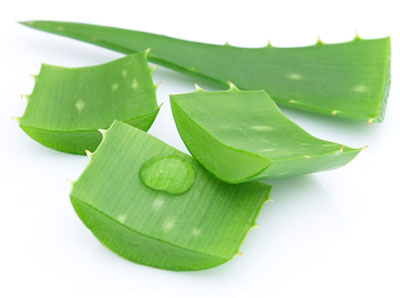
- Broth of coriander. You should take 1 tsp. coriander seeds and soak in a glass of water. With this broth, you need to wash your eyes several times a day.
- Aloe. Take an aloe leaf and cut it in half. Aloe leaf should be applied to barley 4 times a day.
- Salted water. We dip a piece of fabric in salted water, then apply it to the inflamed area several times a day. Care should be taken not to let salt water enter the eye. So barley can be cured at home.
An interesting opinion about barley is presented by psychosomatics (psychosomatics studies the influence of psychological factors on the occurrence of somatic diseases). The appearance of barley means that a person is often subject to irritation, anger, or disagreement with any emotional situation. Psychosomatics does not study the causes of such an emotional state. For her, the most important are feelings. In this situation, it is irritation and anger. There is only one conclusion: if a person can identify the factors that cause negative emotions in him and eliminate them, then the disease will pass on its own. Psychosomatics proves that any influence on the soul is reflected in the body. In our case - in the form of a disease. So, it follows that the causes of barley are:
- You look negatively at people and life in general. Eyes are the mirror of the soul. And if you keep evil on people, then it can be expressed in barley abscess. This is how psychosomatics represent this disease.
- Manifestation of negative emotions. If you think that the reason for everything is the emotional mood, then you should fence yourself off from negative emotions, think positively. In this case, the barley passes quickly. But not all patients trust the science of psychosomatics. Psychosomatics is a young science that studies the influence of psychological factors.
The decision of which method of treating barley should be trusted - conservative, folk or psychosomatic, is up to you.
You should always be careful with children when treating diseases, because barley can cause them a serious complication in the form of meningitis. There are features of the treatment of barley in children.
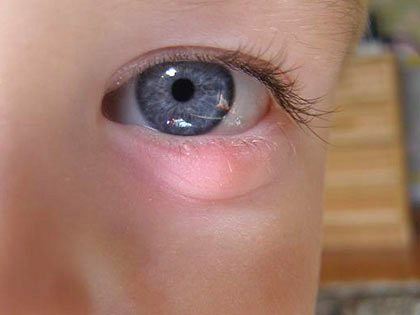
- you cannot squeeze it out;
- applying dry heat is also undesirable, although this is a time-tested remedy;
- contact a pediatric ophthalmologist as soon as possible.
There are situations when there is no way to get advice on how to quickly cure the disease. In this case, you should try the following guidelines:
- When the barley is only slightly inflamed, cauterize it. Here you need to be extremely careful, since the child does not sit quietly in place. To carry out the moxibustion procedure, you need to take a cotton swab, moisten it in alcohol or iodine and treat the eyelid, avoiding contact with the eyes. If this event is carried out at the initial stage of barley formation, then it is quite effective.
- When barley is at its peak, you need to try to take your child to see a doctor. Usually prescribed to children: albucid 20%, tetracycline ointment 1%.
Most often, the use of these drugs is sufficient for the child to recover. An improvement in the condition can be noticed already on the first day. The barley will pass within 5-7 days. Children are also advised to increase the vitamin A content in foods (eat carrots, cottage cheese, liver). If you eat liver, barley disappears much faster as a result of activation of the immune system.
How to cure stye in the eye
A painful inflammatory process that has affected the sebaceous gland or hair follicle at the edge of the eyelid is commonly called barley on the eye. Often people do not take him seriously, which later turns into irritability, insomnia and bad mood for them. Barley, like any disease, must be treated with medication or with the help of folk remedies.
If the problem has not been resolved on its own in a week, you should consult a doctor. Headaches and fever are also reasons for visiting a specialist with barley in the eye. As a matter of urgency, you should go to the doctor even if an overgrown element interferes with seeing normally. The frequent popping out of the nodule on the eyelid is another argument in favor of a medical consultation.
Compliance with hygiene rules is the prevention of adversity. Do not rub your eyes with dirty hands or wipe your face with someone else's or dirty towels. To apply makeup, women should only use their own makeup and train themselves to wash application equipment.
Since barley often springs up when the body is weakened, it is important not to suppress the immune system. Vitamin complexes and hardening procedures will help support the defenses.
Symptoms
 At the initial stage of development of the "seed", there is reddening of the eyelid, pain and burning sensation. Swelling can form on the lower or upper eyelid. Symptoms of the inflammatory process will become expressed by swelling and discomfort when pressing on the element. In some cases, the eye membrane turns red and the lymph nodes swell. The most dangerous manifestations of barley are headaches and temperature fluctuations - signs of intoxication.
At the initial stage of development of the "seed", there is reddening of the eyelid, pain and burning sensation. Swelling can form on the lower or upper eyelid. Symptoms of the inflammatory process will become expressed by swelling and discomfort when pressing on the element. In some cases, the eye membrane turns red and the lymph nodes swell. The most dangerous manifestations of barley are headaches and temperature fluctuations - signs of intoxication.
After a while, the place of edema is occupied by a "pea" with purulent contents. It can dissolve on its own, or it can open up and throw pus out. A person should not contribute to the breakthrough of the papule, otherwise his condition may worsen and lead to the development of complications such as:
- sepsis;
- meningitis;
- phlegmon of the orbit;
- thrombosis of the cavernous sinus.
If the barley disappeared quickly and without an abscess, do not worry. The phenomenon is considered normal.
How long does it take
 On average, a barley problem can last from 3 to 7 days. But sometimes it bothers and longer, until it ripens. How long the process takes is an individual matter. With the formation of internal barley, inflammation occurs in the thickness of the cartilage of the eyelid. A person notices in this area redness and swelling of the conjunctiva. By about the 4th day, a purulent pustule appears through the mucous membrane of the inner part of the eyelid. With the frequent formation of internal barley, doctors diagnose chalazion, that is, a blockage of the gland with all its contents. To the touch, the focus is a small, painless ball.
On average, a barley problem can last from 3 to 7 days. But sometimes it bothers and longer, until it ripens. How long the process takes is an individual matter. With the formation of internal barley, inflammation occurs in the thickness of the cartilage of the eyelid. A person notices in this area redness and swelling of the conjunctiva. By about the 4th day, a purulent pustule appears through the mucous membrane of the inner part of the eyelid. With the frequent formation of internal barley, doctors diagnose chalazion, that is, a blockage of the gland with all its contents. To the touch, the focus is a small, painless ball.
Reasons for the appearance
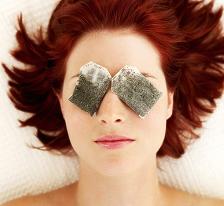 The main culprit in the formation of eye barley is a bacterial infection brought in by unwashed hands or through other people's personal items. Doctors are aware of cases when a pea on the eyelid appeared due to a hereditary predisposition or damage to the body by demodex - a mite that "settles" in the eyelashes.
The main culprit in the formation of eye barley is a bacterial infection brought in by unwashed hands or through other people's personal items. Doctors are aware of cases when a pea on the eyelid appeared due to a hereditary predisposition or damage to the body by demodex - a mite that "settles" in the eyelashes.
Other reasons for the appearance are composed of the following deviations:
- hypovitaminosis;
- hypothermia;
- anemia;
- metabolic disease;
- stressful situations;
- exhaustion;
- colds;
- eye contact with dust or foreign particles;
- inflammation of the edge of the eyelid or mucous membrane of the eye;
- weakness of the body after a serious illness or surgery.
The development of barley is provoked by many factors. After establishing the cause of the formation, the doctor will confirm or deny its infectiousness.
Barley in the eye of a child
 In both adults and children, barley is divided into internal and external. With internal development, inflammation affects a lobule of the meibomian gland. The development of the external element is characterized by acute purulent inflammation that affects the follicles of the eyelashes or the sebaceous gland. When barley forms on a child's eye, parents hear complaints of burning, tingling and other unpleasant sensations in the area of \u200b\u200bthe baby's optic organ.
In both adults and children, barley is divided into internal and external. With internal development, inflammation affects a lobule of the meibomian gland. The development of the external element is characterized by acute purulent inflammation that affects the follicles of the eyelashes or the sebaceous gland. When barley forms on a child's eye, parents hear complaints of burning, tingling and other unpleasant sensations in the area of \u200b\u200bthe baby's optic organ.
Most often, babies suffer from external barley. The process of its development is accompanied by headache, fever and enlargement of the nodes of the lymphatic system. The pathological focus swells and changes color. A few days later, a white or yellowish spot appears in its place. On close examination, parents may notice how it twitches.
After about 2 days, the barley in the child's eye should break through. The flowing pus can be easily removed with a sterile gauze swab, irrigated with Furacilin solution. The release of purulent contents eases the baby's condition, but he needs to be helped until the swelling completely subsides.
The feasibility of using thermal procedures should be discussed with the pediatrician. Usually doctors recommend dry heat. Parents put a boiled egg or potato, heated salt or cereal in a cotton sock or bag. In the first days after the appearance of the swelling, dry heat accelerates the ripening of the barley. But as soon as the purulent bead comes out, the manipulations are stopped. In the summertime, daily sunbathing, taken for 20 minutes, will help speed up the very resolution of barley.
As a conservative therapy for barley on the eye of a child, it is allowed to lubricate the element with the following drugs:
- brilliant green solution;
- diluted iodine;
- ethyl alcohol;
- tincture of calendula.
Compresses and lotions are not applied to the inflamed eyelid in order to avoid the spread of infection. If the doctor deems it necessary, he will prescribe an antibacterial ointment. For medicinal purposes, hydrocortisone or tetracycline ointment is placed in the eyelid several times a day. Antibacterial agents in the form of drops are represented by Erythromycin, Penicillin, Sofradex and Sulfacyl sodium.
Treatment
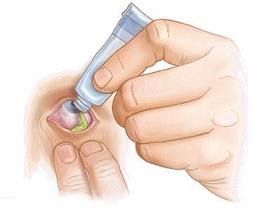 It is easiest to get rid of barley early in the abscess formation. When pinpoint redness is visible on the eyelid, it is enough to cauterize the focus with brilliant green or medical alcohol. It is advisable to entrust the procedure to a specialist in order to avoid getting the drug on the ocular mucosa. Treatment is continued by instilling the eyes with antibacterial drops or by placing an ointment behind the eyelid.
It is easiest to get rid of barley early in the abscess formation. When pinpoint redness is visible on the eyelid, it is enough to cauterize the focus with brilliant green or medical alcohol. It is advisable to entrust the procedure to a specialist in order to avoid getting the drug on the ocular mucosa. Treatment is continued by instilling the eyes with antibacterial drops or by placing an ointment behind the eyelid.
To remove internal pustules or multiple elements, it is recommended to be placed in a stationary environment. In the clinic, a surgeon will be engaged in opening the focus, who, after the intervention, will develop a course of antibiotic therapy and restorative drugs.
Preparations in the form of eye drops for the treatment of barley are represented by the following assortment:
- albucid;
- drops with erythromycin;
- drops with chloramphenicol;
- drops with tobramycin.
They should be injected into the conjunctival sac every 3 to 4 hours, unless otherwise recommended by the doctor. All of these medicines have antimicrobial activity.
If an eye treatment with erythromycin or tetracycline ointment is prescribed, or antibacterial gels are included in the course of therapy, the person should thoroughly wash their hands before starting the procedure. Then you should carefully pull the edge of the lower eyelid, grabbing the eyelashes, and put the drug there. Manipulation is done with the tip of the little finger. During the procedure, the patient must look up so as not to poke a finger into the pupil.
IN folk treatment barley, which has jumped on the upper eyelid, the collection of medicinal herbs shows themselves well. But first you need to make sure that there is no allergy to specific phyto raw materials. The herb recommended by a specialist is brewed with boiling water, and the infusion is filtered through several layers of sterile gauze.
A cut leaf of a tree-like aloe in quackery against barley is used as follows. Juice is squeezed out of a clean sheet and diluted with boiled water in a ratio of 1 to 10. The composition is used for lotions to the swollen eyelid three times a day.
A decoction of dill seeds helps to get rid of the eye nodule. To obtain it, 1 small spoonful of fruit must be poured with 400 ml of water and bring the mass to a boil. Next, remove the vessel from the heat and keep the product under the lid for another 5 minutes. Finally, the product is filtered from the infusion and cooled. To perform the treatment procedure, take a cotton pad and sprinkle it abundantly with dill water. The manipulation is done several times a day.
Video
